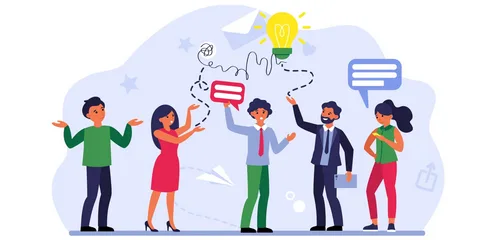Basics of etiquette in business and everyday communication

Basics of etiquette in business and everyday communication
Etiquette is not just a set of rules that we follow to appear polite. It is a tool that helps to establish communication, maintain harmony and avoid unnecessary conflicts. In today's world, where work and personal contacts intersect more often than ever, knowledge of the basics of etiquette is becoming important in both business and everyday communication.
Basics of business etiquette
Business etiquette is the art of proper communication in a professional environment. Whether you're working in the office or remotely, practicing etiquette helps build trust and avoid misunderstandings.
In business communication, it is important to monitor your manners. For example, being late for a meeting or ignoring business emails can leave a bad impression of you and even cast doubt on your professionalism. A simple gesture, such as greeting colleagues at a meeting or ending a conversation with the phrase "thank you," creates an atmosphere of mutual respect. Another aspect of business etiquette is maintaining professional distance. Excessive familiarity, especially in the early stages of communication, can be perceived as disrespect. It's important to remember that every word and action in the work environment can affect reputation.
Everyday etiquette
Etiquette is important not only in the business environment. In everyday life, it also helps to maintain harmonious relationships with others. How we behave in public places affects our perception of others and how our relationship with society develops.
One of the basic rules of everyday etiquette is respect for the personal space of other people. For example, standing too close to someone in line or speaking too loudly in public is a violation of boundaries that can cause discomfort to others. Respect also applies to communication: interrupting the interlocutor or not allowing him to express his point of view is disrespectful. By developing the skill of active listening, you can understand people better and build more trusting relationships.
There is also a rule of "digital etiquette". If you're in a meeting or chatting with someone in person, it's important to mute your phone and avoid checking messages during the call to show respect for the person you're talking to.
Non-verbal communication
Many of us do not think about how important gestures and facial expressions are in communication. Nevertheless, most of the information is transmitted through non-verbal signals. For example, crossed arms can be perceived as a defensive or closed position, and steady eye contact speaks of your confidence and interest.
Etiquette in non-verbal communication includes the ability to correctly use gestures, facial expressions and body language. A direct and confident look, a smile, soft gestures - all this helps to establish contact with the interlocutor. It is also important to consider that in different cultures, the same gesture can have different meanings. For example, a nod of the head that signifies agreement in one country may be perceived differently in another. If you are conducting business negotiations with representatives of a different culture, learn the basic gestures and rules of non-verbal communication in their country to avoid misunderstandings and show your respect.
How to avoid common mistakes
Etiquette may seem complicated and confusing, but it really comes down to respecting other people and paying attention to detail. The most common mistakes in communication are inattention to the feelings of the interlocutor and lack of tact. Often, we can accidentally hurt another person's feelings without realizing it. A simple apology or willingness to listen to the other person can help avoid conflict.
Another common mistake is ignoring gratitude. It is important to remember that "thank you" is not just a word, but an expression of gratitude for the help or support provided. When we forget to give thanks, we leave behind the feeling that we take the help for granted, which can ruin our relationships with those around us.
- Arts
- Business
- Computers
- Juegos
- Health
- Home
- Kids and Teens
- Money
- News
- Recreation
- Reference
- Regional
- Science
- Shopping
- Society
- Sports
- Бизнес
- Деньги
- Дом
- Досуг
- Здоровье
- Игры
- Искусство
- Источники информации
- Компьютеры
- Наука
- Новости и СМИ
- Общество
- Покупки
- Спорт
- Страны и регионы
- World


